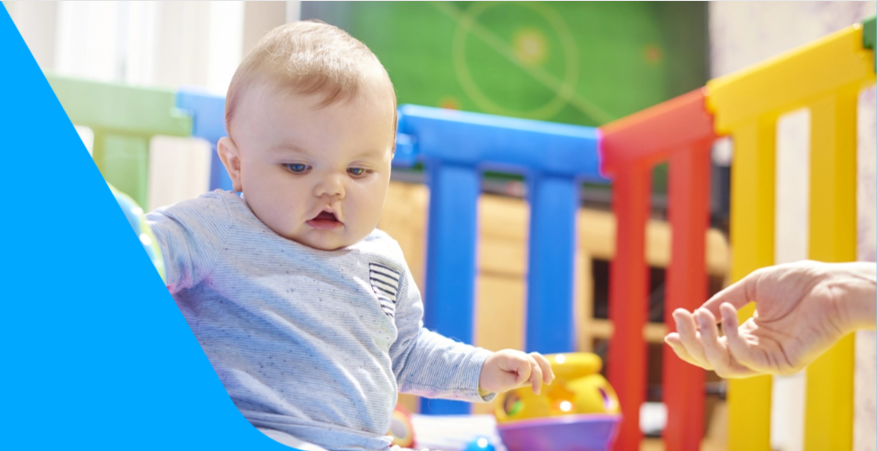How your baby learns through her mouth—and how to encourage it.
Sensory Learning: How a Baby’s Brain Gets Information from His Mouth and More
Perhaps even more than adults, babies are engaging all of their senses as they grow and learn. And you can encourage that learning!
Of the five senses—hearing, seeing, smelling, tasting, and touching—parents are often most concerned with the first two. After all, doctors check to make sure your baby can see and hear well, and it’s easy to connect how these senses inform learning. In reality, though, your baby collects data about the world in many sensory ways.
Some examples of this sensory learning and how you can help to enhance it:
Mouthing
The lips and tongue are more sensitive than the fingers during the first six months of life. That helps explain why your baby seems to bring everything she can—from your fingers to her board books—up to her mouth to lick, gum, suck, and drool on. These explorations provide the brain with volumes of information about an object: shape, texture, size, temperature, weight, and more.
What you can do:
- Provide your baby with lots of safe toys and books of a size that she can lift to her mouth.
- Look for toys (like rattles and plastic teethers) that feature a variety of surfaces, from smooth to bumpy, to familiarize her with a wide range of textures.
- Try not to discourage her from bringing things to her mouth. Instead of saying “no,” simply remove objects that could be swallowed or are too sharp or otherwise potentially dangerous.
Tasting and Smelling
The senses of taste and smell are highly interconnected. Your baby’s taste buds began developing even before you give birth, and she quickly learns to identify your unique smell as a newborn. Your baby eats, in large part, based on whether something smells or tastes good.
What you can do:
- Notice whether your baby reacts to various smells. In general, babies tend to relax and smile more around sweet and milky scents (like breast milk or formula), and they kick their legs or cry at the scent of foul ones.
- Try to be patient if your older baby rejects a food, like broccoli, because of its strong smell. Keep offering and trying new ways of preparing it, because it can take 5 to 10 exposures before a toddler will try new foods. A varied diet can help your child get all the nutrients needed.
Grabbing and Grasping
The ability to grasp a rattle or spoon starts at around 3 months. As your baby grows, reaching for objects is a way for him to bring them close enough to explore. For example, around 7 to 8 months, babies are learning about spatial relationships. Reaching for toys helps her understand concepts such as “top” and “bottom,” the shape, or what’s easy to grab (like a cup handle) versus what’s more difficult (such as a smooth, fat cylinder). By 10 to 11 months, your baby has figured out how to manipulate objects in specific ways, like poking fingers in holes or tearing paper.
What you can do:
- Place interesting toys and other safe objects just out of reach, so your baby can practice reaching and holding.
- Pay attention to age-appropriate labels on toys, which are specifically designed in ways that meet your baby’s developmental stage. Rather than introducing toys for older children in hopes that your baby will get a jump on the learning curve, be aware that toys that are too advanced can cause frustration or boredom.
Dropping and Throwing
Why do older babies like to drop spoons from high chairs or toss toys across the room? To see what happens! Does it make a sound? Where does it go? Hand-eye coordination and spatial awareness also develop this way.
What you can do:
- Try not to get mad when your baby drops toys or food; she’s just being curious.
- Give your baby containers to put things into and take them out of, at around 12 months.
- Around 18 months, introduce a soft ball your baby can toss or roll.





